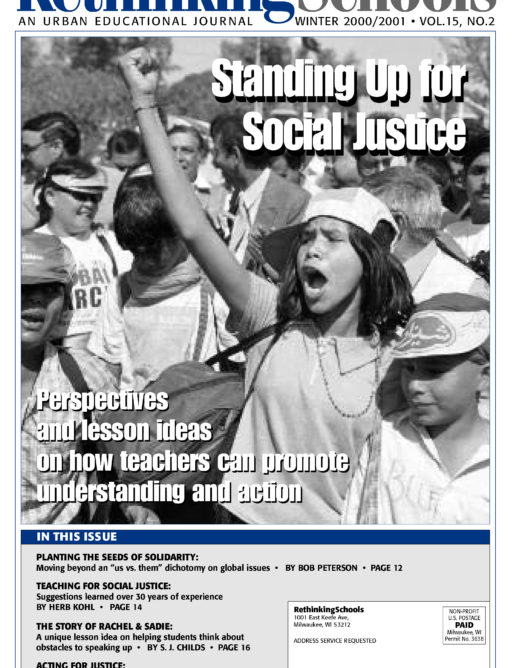Preview of Article:
Planting Seeds of Solidarity
In discussing global issues, how can a teacher nurture student empathy and caring, yet avoid the trap of an "us versus them" dichotomy?
Using simple stories to raise profound questions is among the oldest and best of teaching techniques. It is also an essential strategy in my teaching about globalization issues.
I view teaching about globalization and world justice issues much as I view issues of multicultural education. They need to be both woven throughout the curriculum and highlighted in specific lessons. This approach is necessary in part to find the time to teach about the issues, given all that elementary teachers are expected to cover. But also I find that an integrated approach helps motivate students and teaches them that these are central issues that cannot be dealt with in one or two activities. As a result, my lessons in math, science, social studies, writing, reading, current events – even discipline discussions – all have a world justice and multicultural theme woven throughout.
Teaching about global issues is not the norm in U.S. classrooms and I have struggled with how best to approach the topic. One of the dilemmas I have encountered is that I don’t want to negate my students’ instinctive feelings of empathy and caring, yet I want them to move beyond what in this country is often an “us versus them” dichotomy. I have found that discussions of globalization can feed into the inherently condescending attitude that people in the United States have all the answers, that people in “developing” countries are somehow inferior or less than human, and that assumes that the role of those in the United States is to “help the less fortunate.”
This article focuses on activities that attempt to move beyond the “us versus them” dichotomy and instead engender feelings of solidarity with others around the world. This by no means encompasses my teaching about globalization and there are other important issues, such as how I approach colonialism, world economics, environmental issues, social activism, and building solidarity and community within my own classroom. For a fuller discussion of these issues see Bill Bigelow’s and my forthcoming book, Rethinking Globali-zation: Teaching for Justice in an Unjust World.
The story of my year in Egypt provokes thoughtful comments and questions among students. They express surprise that some children have so little and they wonder what life is like for children around the world. “I can’t believe kids actually wanted just an old can,” I recall a student saying. A response from another student stressed our commonalty: “I believe it. Every kid wants to play!”</p

